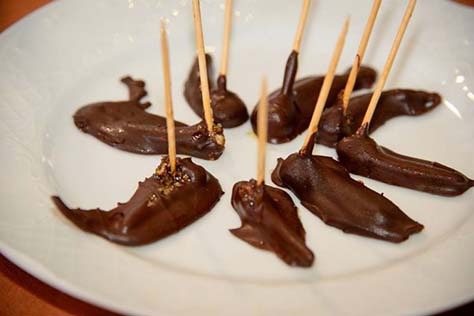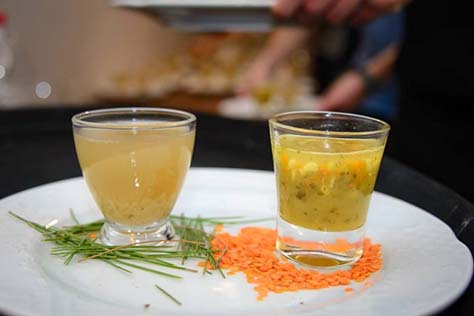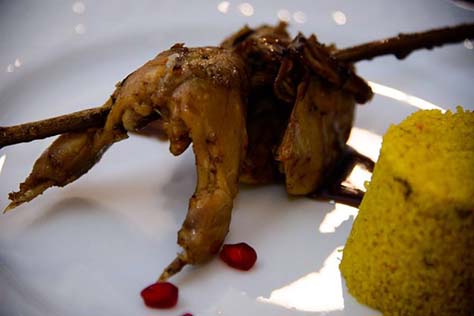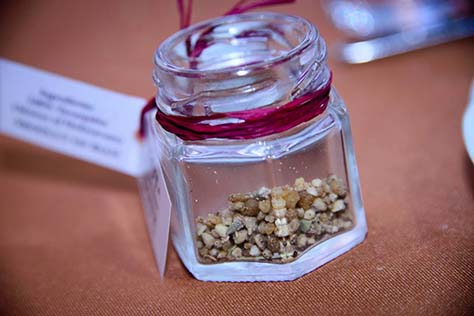The Biblical Museum of Natural History hosted its first Biblical feast, offering a unique opportunity to eat a banquet fit for biblical appetites. When the museum’s director, Rabbi Natan Slifkin, decided to celebrate it for its second year, he turned to Chef Moshe Basson, whose Jerusalem restaurant, Eucalyptus, is well-known for its Bible-inspired menu. Eighty patrons gathered at the museum in Beit Shemesh to sample the Biblical-themed feast. Many of the dishes were prepared with a specific Biblical theme, relating to a parable or story. Here is our choice of a few of our favorite foods that were prepared for the banquet.
Starting off are the chocolate-covered locusts! Even though bugs are expressly forbidden in the Bible, the feast featured locusts, certain varieties of which are kosher. The locusts were dipped in chocolate and caramel to increase the appeal (and taste we are assuming). They were reported to be quite crunchy, with a bland flavor. This food was prepared based on the passage in Leviticus 11:22 stating, “Even these of them ye may eat; the locust after his kind, and the bald locust after his kind, and the beetle after his kind, and the grasshopper after his kind.”

Next we have the lentil stew, from the story of Jacob and Esau. The stew was reported to be “delicious enough to warrant giving up your birthright.” This was followed by a salad based on the seven species listed in the Bible as having a special blessing of the Land of Israel. We can find this food discussed in Genesis 25:34, “And Yaakov gave Esau bread and pottage of lentils; and he did eat and drink, and rose up, and went his way. So Esau despised his birthright.”
Quails are specifically mentioned in the Bible as being so delicious that they led the Children of Israel to sin in the desert. Chef Basson’s version was grilled over fig charcoals on pomegranate skewers and served with a Middle Eastern couscous. The quail comes from the passage in Exodus 16:13, “And it came to pass at even, that the quails came up, and covered the camp; and in the morning there was a layer of dew round about the camp.”
The most surprising element of the meal was only on display, but not offered for general consumption. Listed as “manna from Heaven by way of Iran”, a small jar contained what appeared to be a small amount of rough seeds. Though Rabbi Slifkin refused to divulge his secret source for the divine food that sustained Israel for 40 years in the desert, the crystalline appearance and source are consistent with a substance formed on the bark of the Turkey Oak that grows in Iran, Iraq, and Turkey. The substance is made by aphids, and when dried, forms lumps which are hard and look like stone. Called “Diarbekir manna” by locals, it is ground up and added to flour for baking bread.
Goat, dove soup, and many other dishes were also prepared for this feast. With the desire to learn more about our biblical past, we hope to see more of these banquets being held and that you will be able to experience some of these foods for yourself!
Originally posted at Breaking Israel News.



